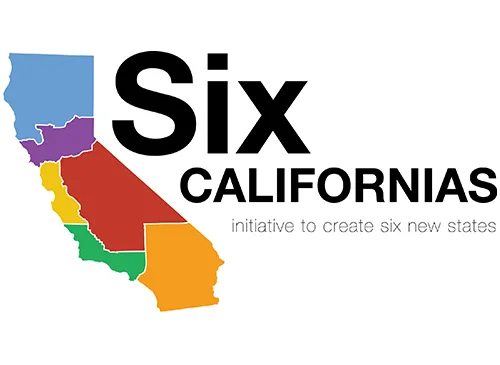Table of Contents
No US territory has gained statehood since Hawaii in 1959, but that hasn’t been for a lack of trying. In November 2012, a majority of Puerto Ricans voted in a “non-binding referendum” in favor of statehood. In November of 2013, eleven counties voted to secede to form the state of North Colorado. Five counties voted in the affirmative.
And late last year, venture capitalist and Silicon Valley millionaire Tim Draper revealed his plan to split California into six new states. He isn’t the first to call for dividing California, either. A South California was proposed as recently as 2011 by Riverside County Supervisor Jeff Stone, and the ‘State of Jefferson,’ a contingent of several northern Californian and southern Oregonian counties, has been trying to garner support for secession since the 1850s.
The Six Californias Initiative would split the state into six—‘Jefferson,’ ‘North California,’ ‘Central California,’ ‘Silicon Valley,’ ‘West California,’ and ‘South California.’
While most current secession movements are due to friction between big-city liberals and small-town conservatives, Mr. Draper has resurrected another common separatist complaint – the state is simply too big and unmanageable.
“The weather is so good here that people don’t want to move out no matter how much they spend for the worst services,” Draper affirms. “We spend the most on education and we are 46th in performance. We spend among the most for prisons, and we have among the highest recidivism rates. We used to spend 26% on infrastructure and now we spend 3%. Overall, the state is a failure for its constituents, and there are a lot of good people who have tried to make it work for all of us.”
The solution? Free market economics, says Draper. “The monopoly needs to be broken up, so that states can compete with each other for counties and constituents and so Californians can choose the state that works for them.” Under the plan,statesmen would need to effectively ‘court’ their citizens during a period of stabilization in which counties would have the option of switching over to adjacent states before borders are finalized.
California is currently ranked as the world’s ninth largest economy, and accounts for roughly 13% of the United States’ GDP. The state also makes up 12% of the US population. While the average US Senator represents a little over 3 million people, Senators Barbara Boxer and Dianne Feinstein represent nearly 19 million—each. Some have raised the question–can two people adequately represent 38 million Californians in the Upper House?
But Draper questions California’s ability to represent its constituents even on the more ‘basic’ state level: “California is a state of many issues and values. In the south, people are concerned about immigration. In the north, taxation without representation. In the Central Valley, it is all about water to feed the world. In Silicon Valley, it is about having a government that can keep up with technology. By trying to be all things to all people, California has failed us all.”
More than a few lack Draper’s enthusiasm. With opponents bemoaning everything from the carving up of the California education system to the tragedy of adding stars to the US flag, many see the switch to six states as reaching for too much, too soon. Others have dismissed the Six California Initiative as a ploy by the Silicon Valley elite to escape anti-business regulations and shrug off the responsibility of supporting impoverished regions such as Los Angeles. Draper disagrees.
“It turns out that the people with the most to gain are [those] who are currently in the poorer areas. The existing ungovernable California is not working for them. The people of [the proposed states of] ‘Jefferson’ and ‘Central California’” are the most anxious to create their own states. In Jefferson, they are upset with a “fire tax” that only affects them and very little of the money finds its way back up to Jefferson. In Central California, they are constantly at war with Sacramento over water. The real question is why we are allowing a state to continue to exist when all systems are failing, and there are people who are poor and poorly represented in government.”
The movement has shown signs of gaining momentum. On February 4th the Washington Times highlighted a California legislative report that declared Draper’s plan “clearly legal and doable”. According to the Times article, organizers are working to collect the 1 million signatures needed for the initiative to appear on the ballot in 2014.
Of course, the plan would ultimately have to be approved by Congress. When asked whether this could pose a potential roadblock, Draper responded, “I actually expect New York to move to create 3 states. Texas might create 5. Local representation is better representation. I don’t think Washington can be so selfish as to keep people from better representation.”
Will California buy it? Draper certainly thinks so. “I think the best way to get support is from [the] grassroots. It will take time. People often have a resistance to change, but once they start thinking about what their state could be if it got a fresh start, people become evangelists.”





